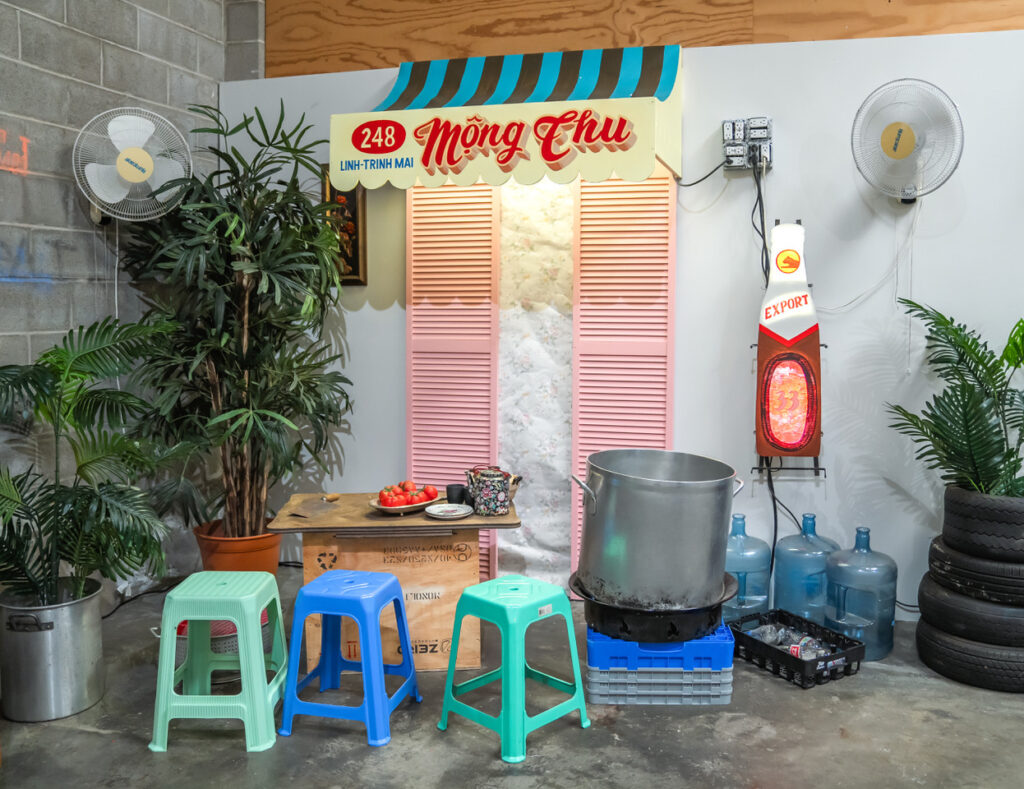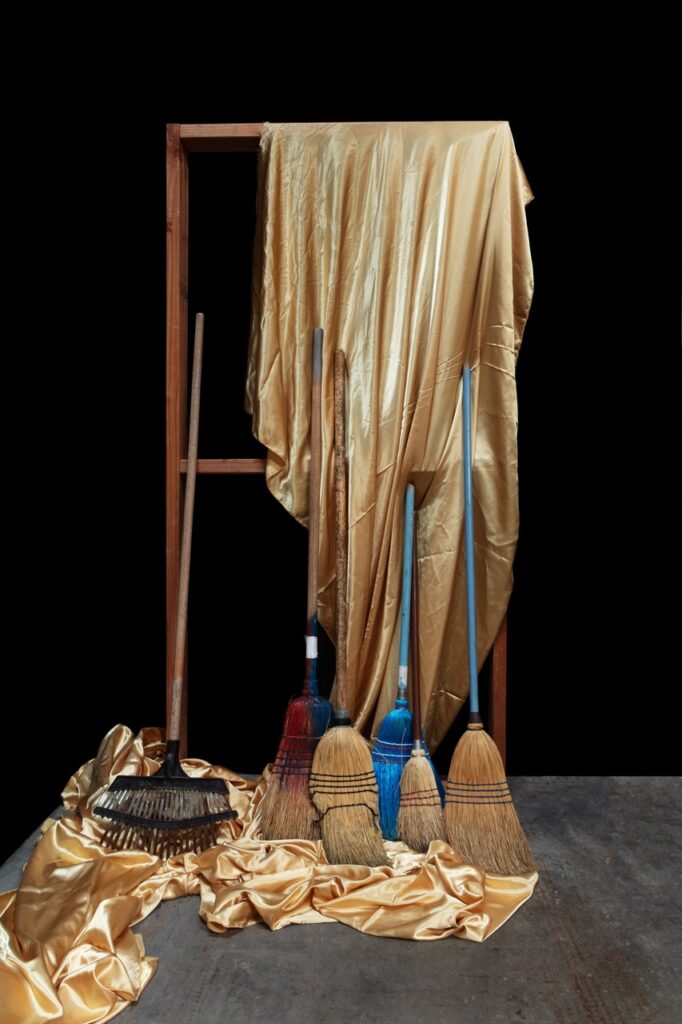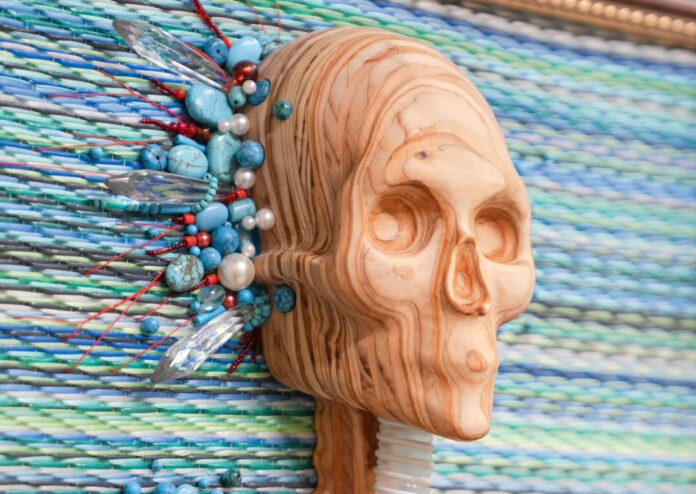During his four-month residency at the Recology San Francisco Artist in Residence (AIR) program, artist Tariq Stone found three grandfather clocks.
For the exhibition at the end of the residency, Stone created a photo exhibit and made a film—which is being shown at Recology’s 35 anniversary show, Art/Education/Community, at Minnesota Street Project, opening Sat/2 and running through August 30—about a celestial being who can only experience humanity through objects that had been thrown away. For the film, he wanted to make the space feel full, so he amassed a collection of big, discarded pieces of furniture, including the clocks.
A teacher of Stone’s at the California College of the Arts, Erik Scollen, told him about the program. Stone says it changed his practice to have a studio space and to get financial support to make his art. Working at the Recology transfer station and getting all his material from the public dump also changed how Stone looks at objects.
“Without them, we’d be covered in trash,” he said about Recology. “For artists, I think it’s really beautiful that it’s expanding the idea of recycling. We can recycle these things into something meaningful, and I think that’s important and powerful. Also, materials are expensive, and that was a huge thing for me. the production design of that film was really cool, and everything was from the trash. If we had to buy those things or source those them it would have been prohibitively expensive.”
The Recology AIR a program was founded by artist Jo Hanson in 1990, who famously utilized street sweeping as part of her practice, at the same time that recycling was being implemented in San Francisco as a result of 1989 state law AB 939. It’s the only one of its kind in the United States, offering a four-month residency with two artists and two student artists at studios on Tunnel Avenue. The residents source everything from the public dump and, along with making art, they give public tours and lead educational programs.
Reached by phone just as she was finishing helping install the exhibition at Minnesota Street Project—which features work by AIR artists from the past five years—Deborah Munk, the manager of the program, says she loves working at a place that values sustainability and community as well as the arts.
“I’ve worked with over 150, 200 artists now, and they all respond to the site differently. It’s pretty much the same pile of stuff, but every artist has these incredible ideas,” she said. “I love the energy with the kids who come through on tours and seeing their eyes spark when they meet the artists.”
Sustainability is a thread that runs through all the work, she says, but it comes out in all kinds of ways with projects that include social issues important to the artists—and sometimes their own family history.
That’s that angle sign painter Michelle Meng Nguyen took. Nguyen said the residency was an opportunity to explore her heritage and make work she wanted to rather than working for her design clients.

Nguyen dove into research on Vietnam and spoke with generations of her family, building a little village made of wood and metal and other materials she found. She named the storefronts and streets after family members, doing things like creating an autobody shop using tires, making awnings out of plastic, and creating a jewelry shop named after her mother who always asked for jewelry as a gift.
She also made a café, named after her mother’s actual café, Mong Thua on Hyde Street in San Francisco.
Nguyen didn’t just use wood and plastic and metal—she repurposed found lights to add dazzle, used speakers that were in the piles of trash to play Vietnamese rock and soul from the 60s and 70s, and played Vietnamese opera on discarded TVs.
Both Nguyen and Stone say being part of the program was wonderful for their practice, changed the way they think about sustainability, and made a difference to them to be in a place where they were so supported.
Kija Lucas heard about the wonders of the program from friends, leading her to apply multiple times. It was totally worth it, she says.
“I wanted to do something that was going to push me outside of my comfort zone and force me to think in a new way when making work,” said Lucas, who usually works on long-term projects. “It was a good way to get my seeing and thinking to shift and try to do something kind of uncomfortable.”

Lucas used the things she found at Recology for her photo project, Still, Life, based on 16th and 17th century vanitas still lifes, which she describes as having “opulence and decay and abundance.”
“I was using these objects that are going into the landfill to talk about mortality,” she said. “But these objects have this sort of immortality and they’re going to live well beyond my life.”
All the artists say the program made them very aware of how much stuff is in the world.
“I’ve worked with artists who said they would never buy another thing again because it’s shocking,” Munk said. “You can’t believe the amount of things that we throw away.”
“ART/EDUCATION/COMMUNITY–35 YEARS AT RECOLOGY AIR runs through August 30 at Minnesota Street Project, SF. Opening reception Sat/2, 6pm to 8pm. More info here.





